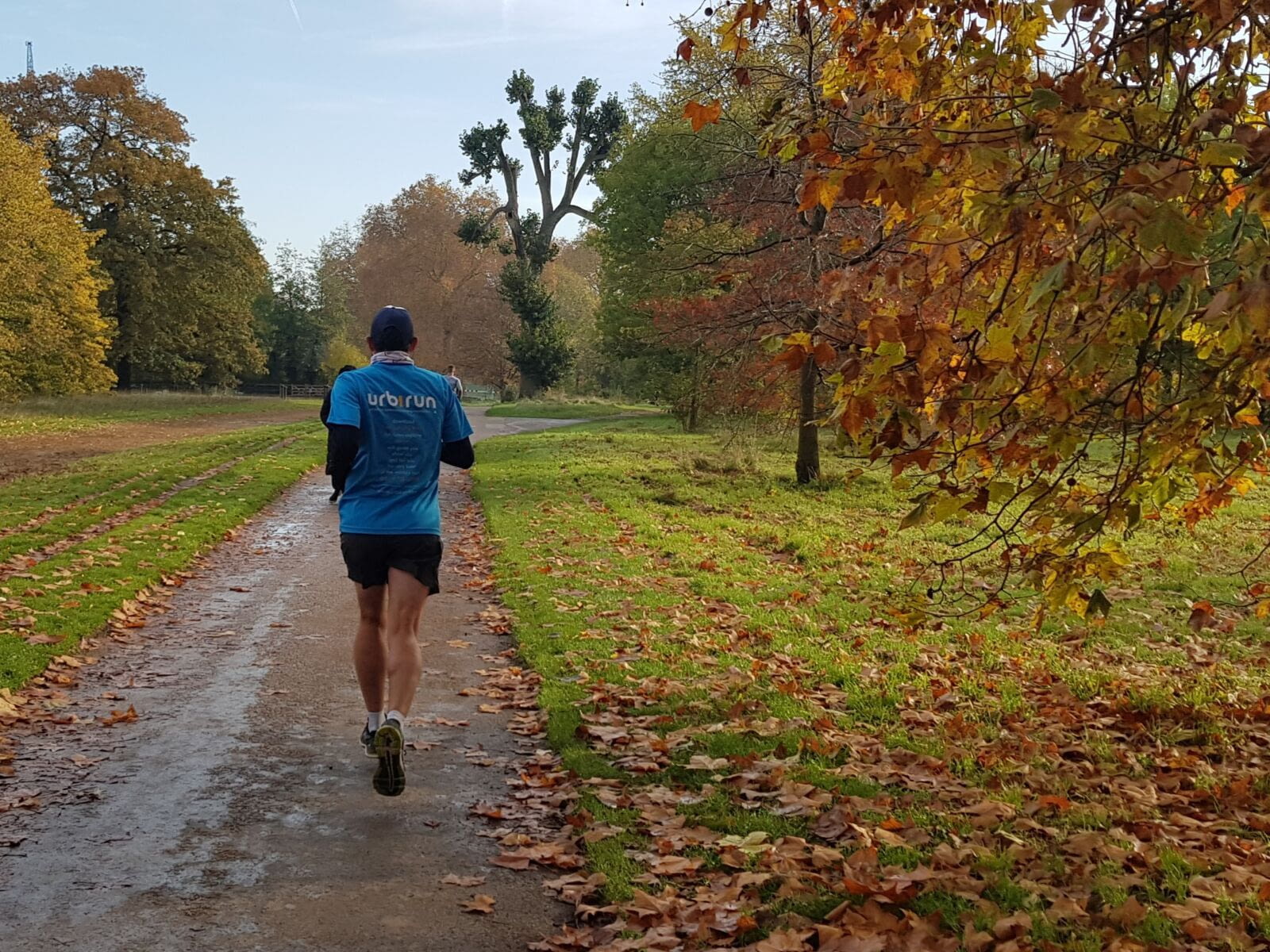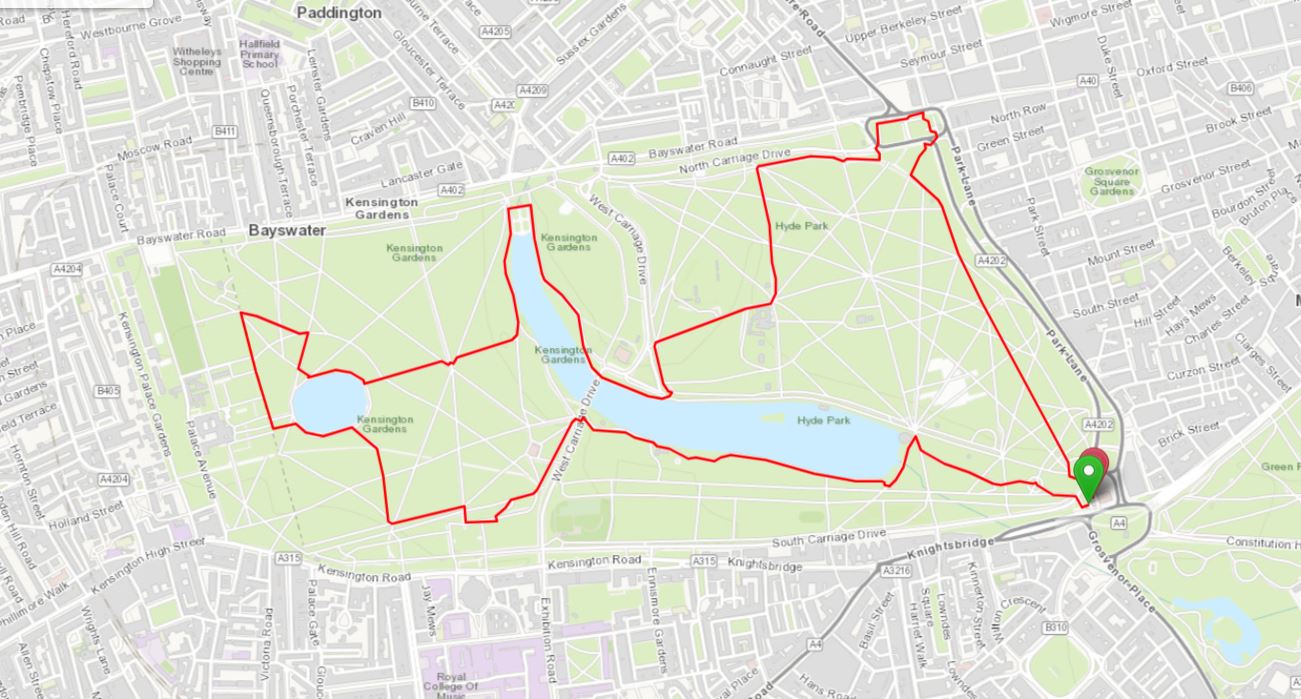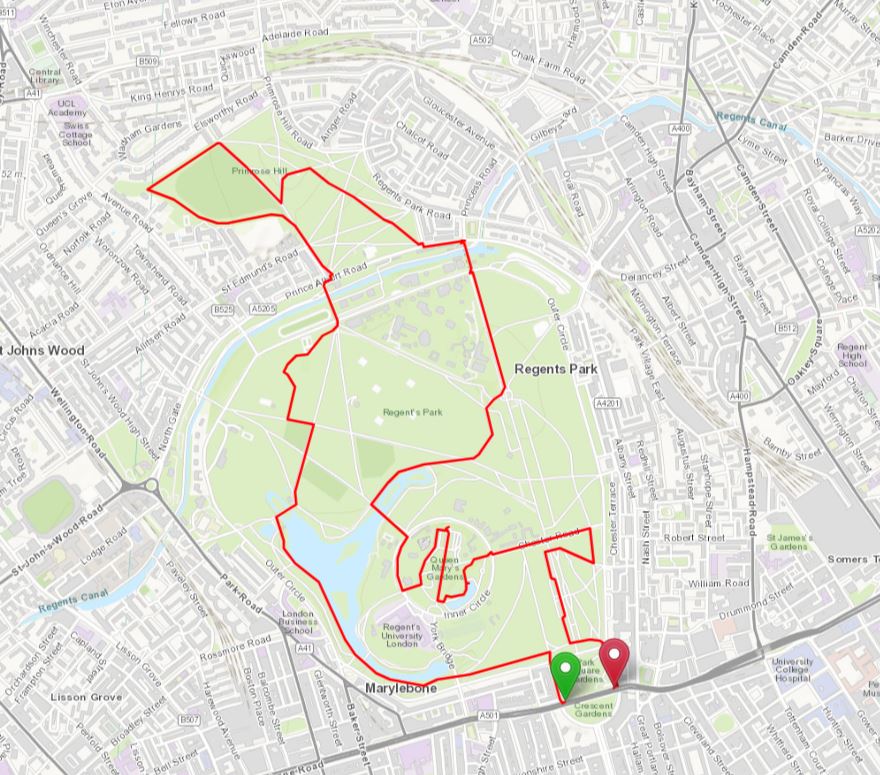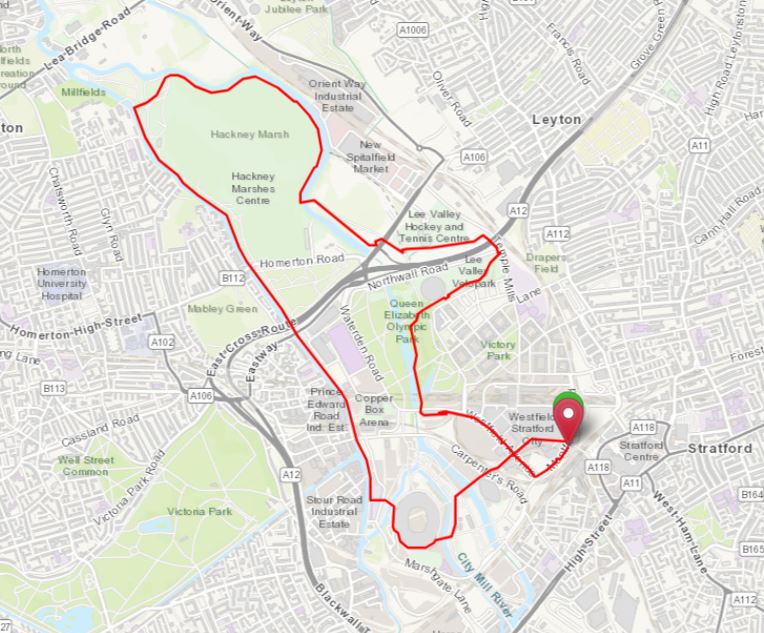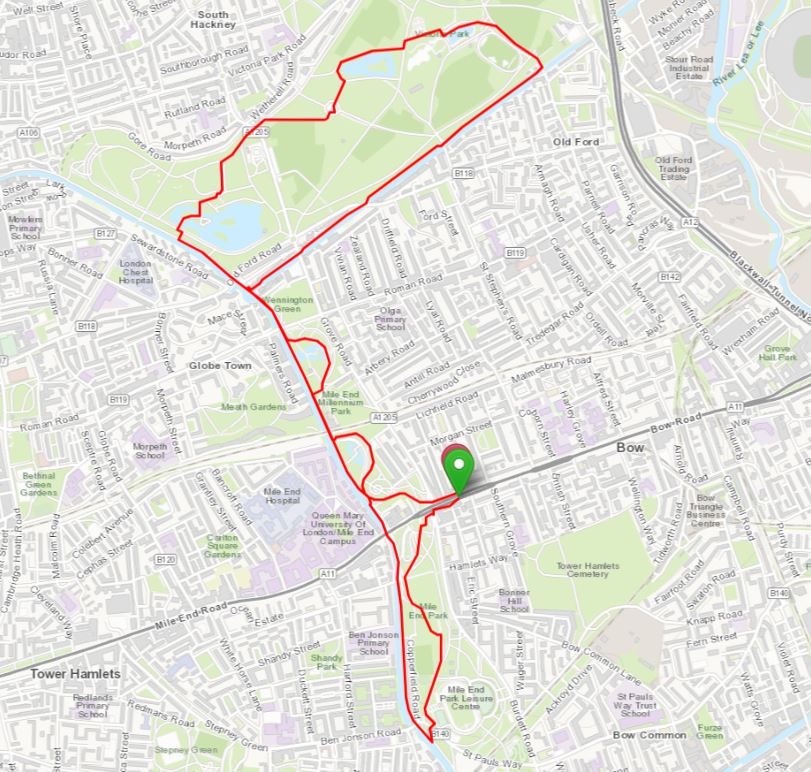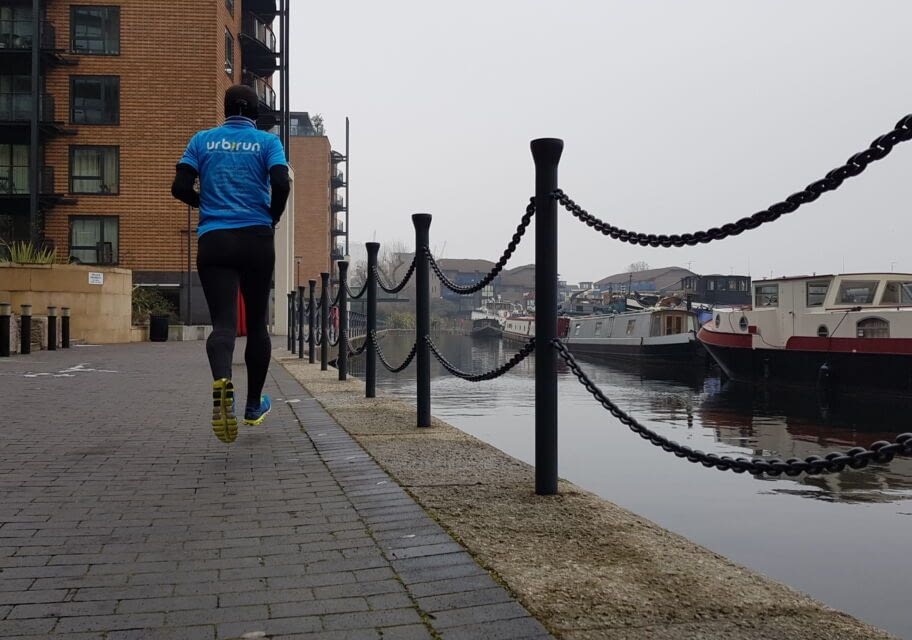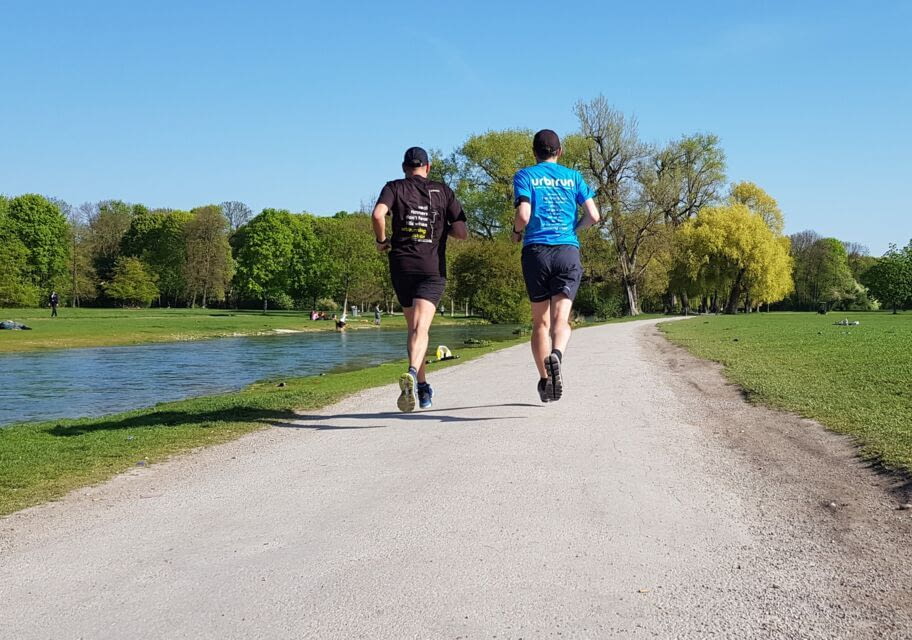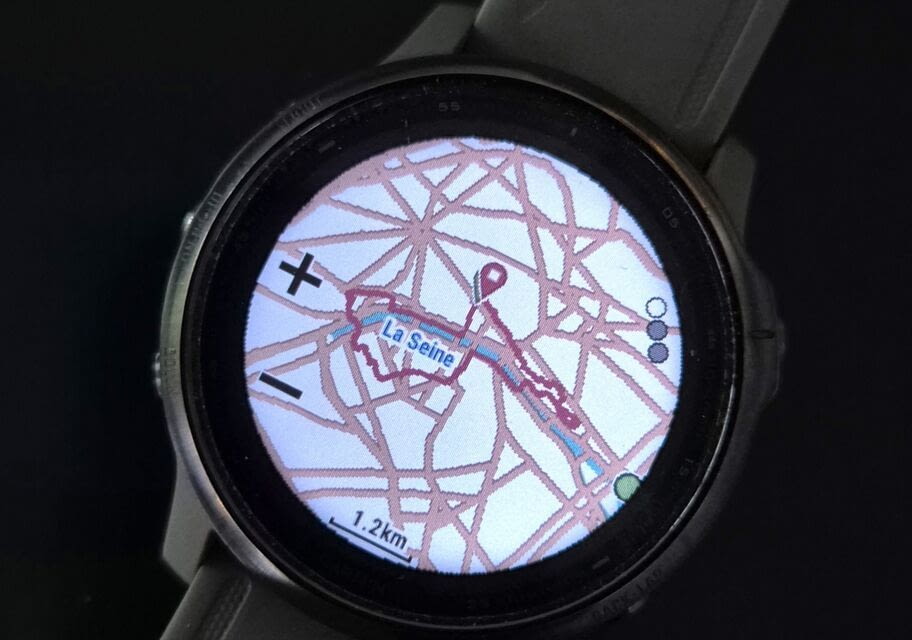Subscribe to our newsletter and keep up to date with urbirun news, new destinations and exclusive routes.
Join de urbirun newsletterIn London, there are not only several urbirun audioguide routes to run and visit, but also many fantastic parks to discover in running shoes.
Perfect places to discover, of course, after visiting the city running on your own, guided by your urbirun audioguide…
urbirun has prepared some routes for you to run in these parks and discover the best of them. All you have to do is download the .gpx file, and off you go.
Hyde Park and Kensington Gardens – 8.3km https://payhip.com/b/5QCi9
This complex of 2 parks covers no less than 253 hectares of lawns and small woods, nesting an artificial lake, the Serpentine, and dozens of paths.
Entrusted by the King to the monks of Westminster Abbey, the park was initially a hunting reserve. It was opened to the public in 1637.
Bordered to the west by Kensington Palace, its centre is occupied by the Serpentine, an artificial lake created in 1725, near which stands the Princess Diana Memorial Fountain. At the north-east corner of the park is Speaker’s Corner, a famous place of free expression, where every Sunday people stand on a crate and proclaim their political, religious or other opinions, sometimes being interrupted and challenged by their audience.
Underground access: Hyde Park Corner station on Piccadilly (next to the park, south)
St James Park & Green Park – 6.5km https://payhip.com/b/OhIdf
Download this route to run and visit Saint James Park and Green Park, two parks close to London’s most famous landmarks, where you might even be able to see the Changing of the Guard.
Starting from Westminster tube station, at the foot of Big Ben, we’ll take you to St James’s Lake, which you’ll cross on a bridge offering a beautiful view of Buckingham Palace. You will run close to the Palace before entering Green Park. You’ll then run along the ‘red carpet’ of the Royal Mall, before a short diversions to St James’s Gardens. Of course, you won’t miss Admiralty Arch, and the iconic Horse Guards (if there’s no parade, you’ll even cross their building, heading straight for Embankment, the bank of the Thames, to get back to the start of this loop.
Underground access: Westminster station on Circle, District and Jubilee
Regent’s Park & Primrose Hill – 8.4km https://payhip.com/b/WoSHA
Regent’s Park is almost circular and is one of the largest green areas in the city: 166 hectares. Originally a hunting ground, then farmland, it was opened to the public only in 1845, and then only 2 days a week at first.
It is now a bustling park, home to London Zoo, as well as a botanical garden and numerous sports facilities, including tennis courts and cricket pitches. There are a variety of garden styles, including Queen Mary’s Rose Garden.
As in other parks, there is also a lake.
It is bordered to the north by the Regent’s Canal, which marks the boundary with the smaller Primrose Hill Park, which is reached by the 2 bridges next to the zoo. As its name suggests, Primrose Hill is a small hill, but don’t worry, its summit is only 78m high.
Underground access: Regent’s Park station on Bakerloo
Queen Elizabeth Olympic Park & Hackney Marsches – 9.8km https://payhip.com/b/O4bm7
Here’s a suggested run to visit and explore Queen Elizabeth Olympic Park, where you can admire the magnificent facilities built for the 2012 Olympic Games, and enjoy both the architecture and the natural surroundings. This route also takes you to the Hackney Marshes and along the Lee Canal, on peaceful paths designed for quiet running.
Underground access : Stratford station on Central and Jubilee
Victoria Park & Mile End Park – 7.5km https://payhip.com/b/75OiT
Victoria Park (88 hectares) was originally part of a bishop’s palace, but was devastated in the mid-nineteenth century by the extraction of gravel and clay for brick-making.
Opened to the public in 1845, it is reminiscent of Regent’s Park, although less frequented, and is considered to be one of the finest parks in East London.
It is bordered on two sides by canals: Regent’s Canal on the west side and the Hertford Union Canal to the south. Two pedestrian alcoves, remnants of the old London Bridge demolished in 1831, are located at the eastern end of the park, near the Hackney Wick war memorial.
At the end of the 19th century, Victoria Park became a favourite spot for the working class of London’s East End. For some children of that era, the park may have been the only uninterrupted area of green grass they had ever seen. Features such as the bathing pool enabled many to learn to swim where most facilities at the time served only as public baths.
Victoria Park’s reputation as a ‘people’s park’ grew as it became a meeting point for political meetings and gatherings of all kinds, perhaps surpassing those of the much more famous Hyde Park.
During the war, Victoria Park remained largely closed to the public and became a major anti-aircraft site including a prisoner of war camp. The gun control rooms were located underground in bunkers.
The park now hosts open-air concerts and is home to the world’s oldest model boat club, which still organises regattas on Sundays.
To the south of Victoria Park is the 32-hectare Mile End Park, which was created to replace an industrial area devastated by the bombings of the Second World War.
It features the Mile End Stadium, an athletics stadium, a climbing wall and a go-kart track.
Underground access: Mile End station on Central, District, Circle, and Hammersmith
